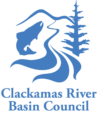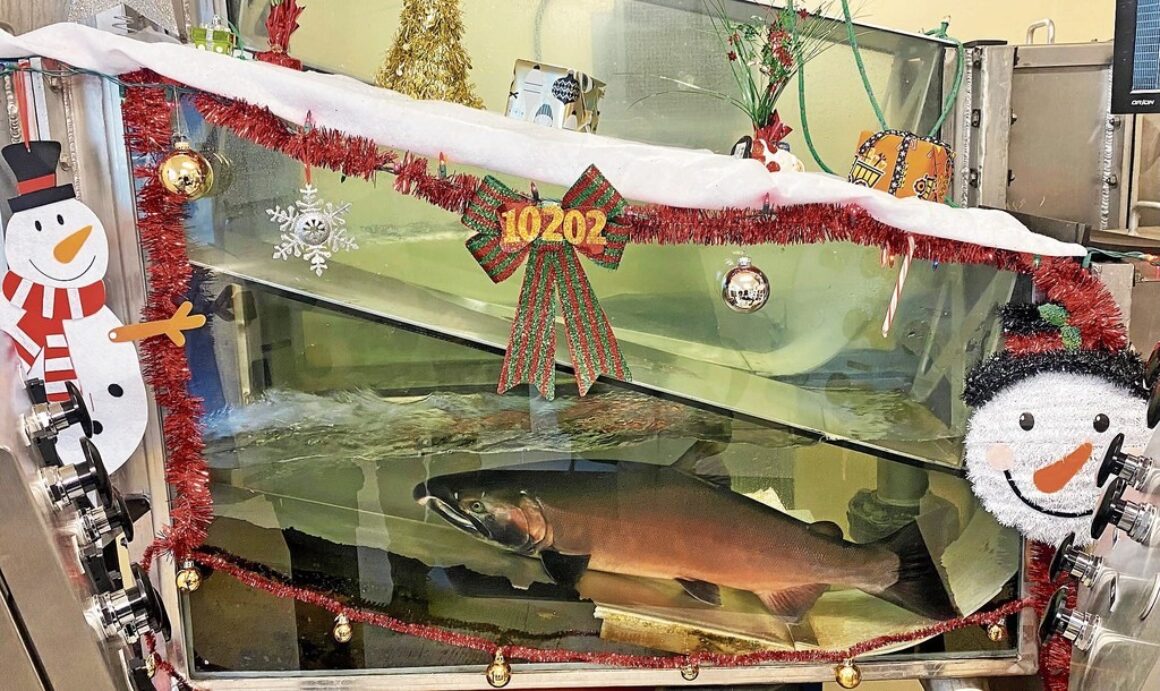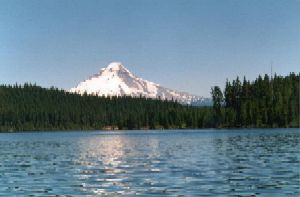By Bill Monroe
The jury may still be out, but the evidence is mounting.
Partnerships on the Clackamas River are resulting in significant successes for wild fish, defying perceptions of fish-killing dams.
The secret is in partnerships.
Witness this excerpted 2023 report from PGE’s Clackamas Project at North Fork Dam, from senior scientist Nick Ackerman:
“A record wild return of spring Chinook has now effectively concluded, with 4,770 adults back to the trap which is 172% of the 10-year average. This record return surpassed the next two best years of 2004 and 2020 when approximately 4100 wild spring Chinook were passed upstream of North Fork Dam.”
And even better…
“The early-run (wild) coho return to the Clackamas is mostly complete. With 15,081 adults returned to North Fork through October, the tally far surpasses not only the previous early-run record of 9,454 (2021), but also has already exceeded the total coho return record (early and late run combined) of 13,136 set in 2022. The late-run component has just begun and we expect to see approximately 2,500 of these fish return over the next few months.
“Notably, for the first time since North Fork Dam was built and counts began, the total number of winter steelhead, spring Chinook, and coho salmon passed upstream of North Fork Dam in a calendar year has exceeded 20,000 fish. For these three species combined, the average total number of adults passed upstream over the past 10-years has been 9,756 and this year 21,424 adults have already been passed upstream of North Fork.”
Much, if not most, of the early credit is due to PGE and its steadfast commitment to maintaining wild salmon and steelhead runs alongside state and federal hatcheries.
PGE invested millions in both a state-of-the-art fish passage facility at the dam and substantive habitat rehabilitation above and below its important hydro-electric showcase.
Tens of thousands of spring Chinook, steelhead and coho fry are seasonally intercepted and safely sent downriver, while returning adults are carefully sorted (see photo above). Wild fish are allowed upriver to spawn and hatchery fish are returned downriver.
But the downstream passage of juveniles and lower river wild spawning coho have also benefited from substantially improved habitat conditions throughout the Clackamas watershed.
The Clackamas River Basin Council, Clackamas Water Providers, the Soil and Water Conservation District, U.S. Forest Service, Oregon Department of Fish and Wildlife Metro and numerous other partners, including a growing cadre of private landowners, are an umbrella of success for all fish – and wildlife, too, in the Clackamas River’s important riparian areas.
After PGE safely shepherds juvenile wild fry hatched in the Cascades through the dam’s safe chutes, those tiny fish still have to find someplace to survive the trek and rear themselves into sea-worthy migrants as they begin perilous journeys through a gauntlet of challenges.
There’s a period in the life of salmon and steelhead when their young brains tune in to imprinting, marking key chemicals and geographic impulses in their little neurons that will bring them home years later to spawn.
Hatchery fish – raised en masse in an orphanage environment – are purposely housed and fed to a point just before this period begins, then are either retained and released from their natal hatcheries or trucked to other streams and rivers so this important event will occur where they’re released.
They literally scoot quickly downriver on their way to the ocean.
Wild youngsters, however, are on their own.
None are inherently safe, there are no daily feedings, no trucks to safely shorten their bon voyage.
All wild fish can can do as fry is seek shelter somewhere and hope for the best – discover mother nature’s foster homes to feed, grow into pre-teens and then find their own paths downriver through a maize of pollution, predators and premonition.
And that’s where the Clackamas River Basin Council and its partners perform our best work.
We build it; the fish come.
Our state, local and federal biologists regularly monitor and report the presence of baby wild salmon and steelhead in the gamut of tributaries to the Clackamas River and beyond.
Yes, beyond.
Clackamas fish often leave the river to find refuge in small nearby tributaries of the Willamette River.
Accordingly, our official partners include: Greater Oregon City Watershed Council; North Clackamas Watersheds Council; Johnson Creek Watershed Council; Clackamas Soil and Water Conservation District; Metro; US Forest Service (Mt Hood National Forest, Clackamas Ranger District); Confederated Tribes of Warm Springs; North Clackamas Parks & Recreation District, and the Oregon Department of Fish and Wildlife.
No rivulet, creek or stream is too small for tiny fingerlings, which shelter and rear wherever cool, clear water flows.
Witness this excerpted observation from our counterparts/peers at Rogue Riverkeeper:
“Rogue River is fed by dozens of important tributaries across the Rogue basin…there are many hidden tributaries that play an … important ecological role.
“These small waterways are often unnamed and maybe even lost behind thickets of blackberry or tucked in seldom-traveled parts of the valley. (They) provide essential cold water that many native fish rely on. They are even called “cold water refuges” for the critical role they play for summer steelhead and fall Chinook.
“When summer temperatures rise, so do water temperatures. Many native fish rely on cold temperatures to survive and thrive.
“Protecting these cold water refuges, even the tiny ones that may seem insignificant to us, is critical for the survival of migrating salmon and steelhead and the recovery of future native fish populations.”
So, too, for the Clackamas River Basin, comprised of not only upriver spawning beds, but also numerous rearing tributaries and even smaller, important rivulets throughout the watershed.
Witness also this 2023 video, produced by a landowner on a small feeder into Eagle Creek, a major wild and hatchery salmon and steelhead tributary of the Clackamas below North Fork Dam.
Yes, PGE is the hub…the core of resurrection for Clackamas salmon and steelhead, but the contributions of our partners are critical.
As pointed out in the Rogue River (and dozens of other watersheds across Oregon): Every planted shade tree; every placement of a soon-to-decay log; every new bend in a creek; truckload of spawning-size gravel, even (yes!) submerged Christmas tree – however small, they all contribute as key parts of the whole.
(This committed landowner and his family actually did all those things largely on their own nickels in their adopted creek.)
Private, non-profit, or public, our mutual effort is committed to a single goal – rebuild and restore this river and its environs using salmon as our key bellwethers.
Fact is, the growing successes reported by PGE in the Clackamas River are living proof that not only can hatchery and wild fish survive on a dammed river, both can thrive if given the key combination of support and partnerships.
If you would like to support the Clackamas River Basin Council’s mission, please donate here:


